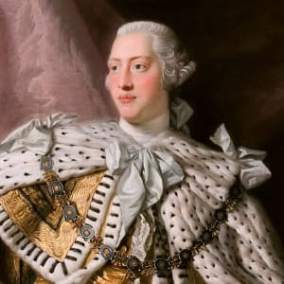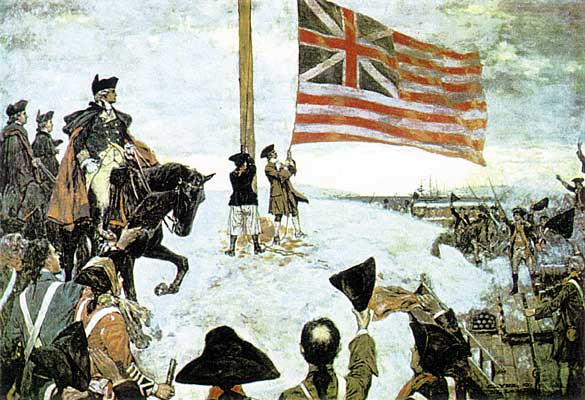On New Year’s Day, Monday, January 1, 1776, British officers approached the American lines in Roxbury, Massachusetts under a flag of truce. At least one of the men was carrying copies of a broadside for distribution among the soldiers of the Continental Army. This was King George III’s speech, delivered before Parliament back on October 27, 1775. It had been published with the hope of putting the fear of God into the rebel army.

The king declared that the colonists’s “strongest protestations of loyalty to me” were both absurd and offensive given that they were presently engaged in a “rebellious war . . . carried for the purpose of establishing an independent Empire.” The colonists must either return to the British fold or admit that they were engaged in a war of independence.
The reaction among the army was rage and indignation. The speech was burned in public by the soldiers. Its charges of traitorous rebellion and its ominous reference to “foreign assistance,” assuredly ended any hope of reconciliation or a short war. The effect of the King’s speech on General George Washington was profound.

If nothing else could “satisfy a tyrant and his diabolical ministry,” he wrote to his aide Colonel Joseph Reed, “we were determined to shake off all connections with a state so unjust and unnatural. This I would tell them, not under covert, but in words as clear as the sun in its meridian brightness.”
As it happened, Washington had already acted to strengthen the solidarity and resolve of his troops. January 1 was the first day of “a new army, which in every point of view is entirely continental.” He stressed the hope that “the importance of the great Cause we are engaged in will be deeply impressed upon every man’s mind.” Everything “dear and valuable to freemen” was at stake.
To celebrate this event, Washington replaced the large red flag previously raised by Israel Putnam on the heights of Prospect Hill. With the crash of a 13-gun salute, he raised a new flag — a flag of thirteen red and white stripes, with the British colors (the crosses of St. George and St. Andrew) represented in the upper corner. The works at Prospect Hill were the equal of any fortification in Boston being situated on a large outcropping with a commanding view of the Mystic River and all of Boston Harbor. 
Soon after the Battle of Chelsea Creek, Israel Putnam’s men had transformed the British schooner Diana’s seventy-five foot mainmast into a flag pole, and it was from this tar-stained pine that the Union flag of the Continental Army proudly waved. When the British in Boston saw it flying from Prospect Hill, they at first mistook it for a flag of surrender.

It has been argued that the Somerville, Massachusetts annual New Year’s Day flag ceremony on Prospect Hill commemorates something that never really happened. There are others who claim it is accurate.
Resources:
https://patch.com/massachusetts/somerville/research-upholds-traditional-prospect-hill-flag-story
Philbrick, Nathaniel. Bunker Hill A City, A Siege, A Revolution. 2013: Penguin Books, New York, NY.
McCullough, David. 1776. 2005: Simon & Schuster, New York, NY.


I love this story. Even if it never really happened, it’s still wonderful.
LikeLiked by 2 people
I agree. Either way, it’s definitely the story of heroes! Happy New Year, Susan!
LikeLiked by 1 person